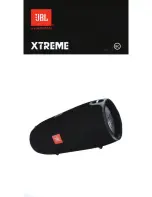
DLM8/12 P
o
w
er
ed Loudspe
ak
ers
12
DLM8/12 Powered Loudspeakers
DLM8/12 Loudspeaker: Rear Panel Features continued...
11. Channel 1 and 2 Buttons
Press the Channel 1 or 2 button repeatedly until
the parameter you want to change (for that channel)
is highlighted:
• Level
• Low
• Mid
• High
• FX Send [Reverb, Chorus, Delay]
Once the parameter you want to change is
highlighted, press the + or – button [16] repeatedly
until you have achieved the perfect parameter value.
Let’s take a more detailed look at each of the five
input channel parameters:
Level:
Level adjusts the overall signal level at the inputs
to the built-in power amplifiers. It ranges from off
(– dB) to +10 dB.
Channel Equalization (EQ):
Both DLM input channels have 3-band EQ with
shelving high, peaking mid and shelving low.
Shelving means that the circuitry boosts or cuts all
frequencies past the specified frequency. For example,
the low EQ boosts bass frequencies below 80 Hz and
continuing down to the lowest note you never heard.
Peaking means that certain frequencies form a “hill”
around the center frequency.
With too much EQ, you can really upset things.
We’ve designed a lot of boost and cut into each
equalizer circuit because we know that everyone
will occasionally need that. But if you max the EQ
on every channel, you’ll get mix mush. If you find
yourself repeatedly using a lot of boost or cut, consider
altering the sound source, such as placing a mic
differently, trying a different kind of mic, a different
vocalist, changing the strings, or gargling.
Low:
The low EQ provides up to 15 dB of boost or cut
below 80 Hz. The circuit is flat at the center position.
This frequency represents the punch in bass drums,
bass guitar, fat synth patches, and some really serious
male singers who eat raw beef for breakfast. This band
changes incrementally by ±3 dB.
Mid:
Short for “midrange,” this EQ provides up to
15 dB of boost or cut, centered at 2.5 kHz, also flat at
the center position. Midrange EQ is often thought of as
the most dynamic, because the frequencies that define
any particular sound are almost always found in this
range. You can create many interesting and useful EQ
changes by turning the mid EQ down as well as up.
This band changes incrementally by ±3 dB.
High:
The high EQ provides up to 15 dB of boost or cut
above 12 kHz, and it is also flat (no boost or cut) at
the center position. Use it to add sizzle to cymbals, an
overall sense of transparency, or an edge to keyboards,
vocals, guitar and bacon frying. Turn it down a little
to reduce sibilance or to mask tape hiss. This band
changes incrementally by ±3 dB.
FX Send:
This control sends the channel input to the built-in
FX processor. The 16 built-in FX may be selected from
the SYS screen [13]. Reverb, chorus and delay make up
the 16 choices. The chosen effect is global. Be sure to
check out a more detailed description of each effect in
Appendix B.
12. Front LED On / Limit / Off
Pressing the channel 1 and channel 2 buttons [11]
simultaneously gives you the option to turn the front
LED on, off or limit. Press the + or – button [16] to
make a choice, followed by any other button to exit the
screen. Choosing limit means the LED is on full-time.
However, it will flicker when the limiter is active
[3 dB of attenuation, averaged].













































